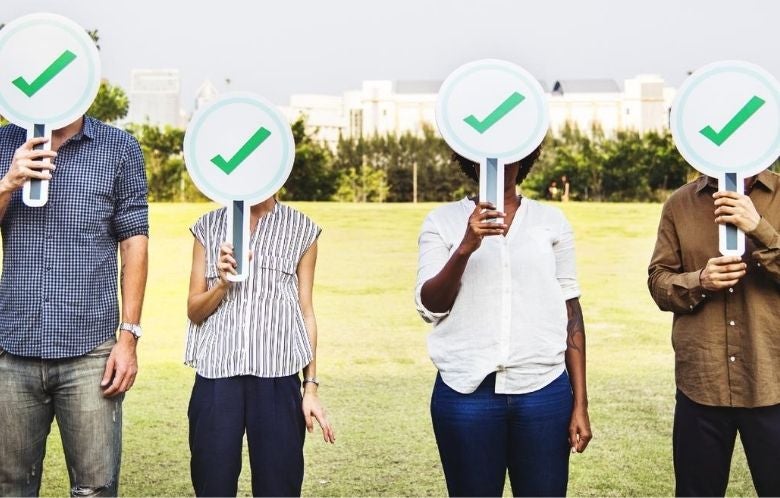At EveryLibrary, we’ve helped several of our library partners reimagine their standard Library Card Sign-up Month by using best practices from voter registration drives and candidate interactions with voters. We know from the voter data how critical it is for those in your community who don’t use the library to see their librarians out in the community. We know from experience that volunteers can effectively represent their librarians in this kind of context, too. Taking your library card sign-ups outside the building allows you to build new relationships across neighborhoods.
Whether your library serves an urban core, a walkable suburb, or a place where driving is necessary, the goal is to put the people doing library card sign-ups into unexpected places. The most unexpected is the front door. If you can’t walk your community due to geography or other issues, you can get to less than usual places outside of the library by setting up tables in front of stores or other gathering places and at community events. We recommend a three-part evaluation when looking at where to go in your community:
- Where would library card access provide immediate new impact?
- Where is there a lack of awareness that the library exists?
- Where does the library gain the most from new marketing?
The library is one part of civil society where people don’t laugh when you say, “I am from the government and I am here to help.” For staff, friends, trustees, and volunteers, this is an incredible opportunity to say to someone, “I am here as your neighbor. Let me tell you about our library.” Most importantly, you can meet your community members where they are; the ability to shake a person’s hand, look them in the eye, and introduce yourself as their librarian is powerful.
Quick Start Guide for Door-to-Door Library Card Sign-ups
- Get your data ready. This can be easily assembled with AtoZ Database or ReferenceUSA, two of the most common subscription consumer databases at libraries. Each of these platforms offers you the opportunity to find all households/individuals within a zip code. Then, by importing this list into a spreadsheet along with a list of current cardholders from your ILS, you can delete any duplicates and be left with houses and addresses of individuals who don’t have library cards.
- Look at your library card addresses. Pick a neighborhood with a:
a. low rate of cardholders
b. low rate of use per card
c. lots of housing turn-over - Build your walk lists. If you don’t have access to a tool that plots canvassing routes like NationBuilder, Voter Gravity, or others, you can start by mapping the houses from the spreadsheet on Google Maps or at www.mapcustomizer.com, printing out sections of the map and highlighting the households which volunteers are responsible for targeting.
- Pick one weeknight and one weekend day. It is a great idea to have options for canvassers, especially if they are volunteering. A canvasser can cover a lot of ground in just a few hours so that you can reach a lot of households with just 6-8 volunteers.
- Make up a few flyers. Likely audiences for library cards include families with little kids, seniors, and high school or college students. Or try a flyer about the library (hours, location, website, phone, etc.). If you have a measure on the ballot, this is the perfect time to leave an information-only piece with the resident.
- Write a short script. Here’s a simple one:
“Hi, I am John, and I work at your library. We’re visiting everyone on your block today as part of Library Card Sign-up Month to see if they need a library card. Do you have a library card? No…? Can I sign you up for one right now? They’re free, it only takes about one minute, and we’ll mail it out to you next week.”
The script starts a conversation. Library staff are good at talking to people about what they need, so let them help build a script that they are comfortable using. - Training. Rehearse the script in a group setting. Roleplay the script and develop plans to address these scenarios: What happens when no one is home; What do you do when they say ‘No’; What do you say when they don’t need a card themselves; What happens when they say ‘Yes’?
- Start walking. Grab your clipboard and tote bag full of info flyers, and knock. Every walker needs a clipboard, pens, and forms. Give your team permission to take pictures and tell them where to text them or post directly.
Ready to make this year’s Library Card Sign-up Month your most successful yet? Download a sample planning timeline and watch our webinar, Promoting Library Card Sign-up Month (from inside and outside the library) to learn more.
John Chrastka is a founder and executive director of EveryLibrary.
